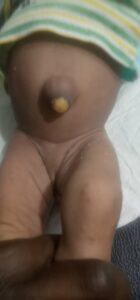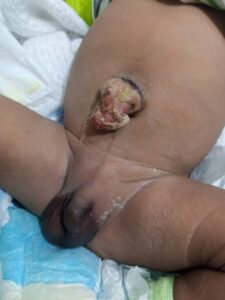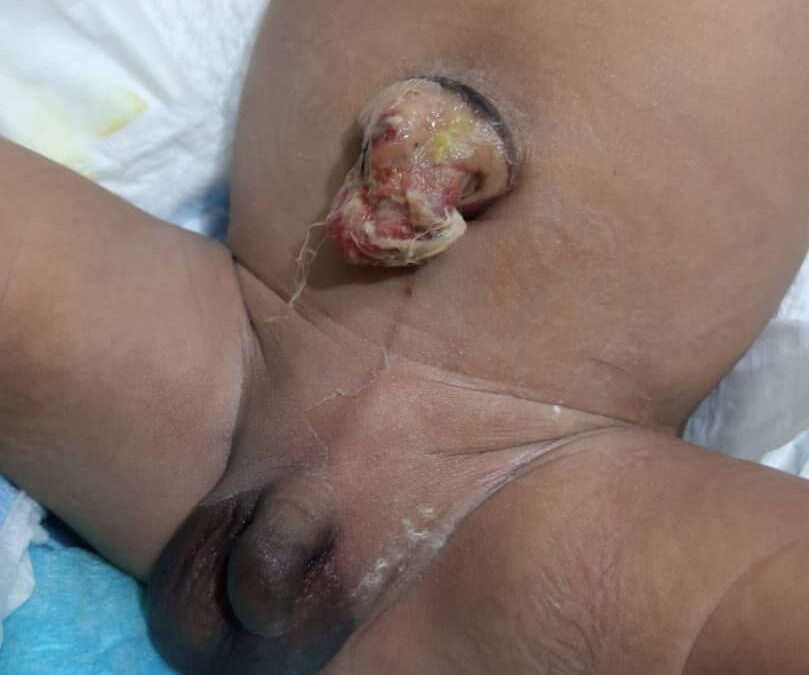What is Umbilical Cord? The umbilical cord is a narrow tube-like structure that connects the developing baby to the placenta. It plays a vital role in the survival of the foetus, the cord is sometimes called the baby’s “supply line” because it carries the baby’s blood to and fro, between the baby and the placenta. It delivers nutrients and oxygen to the baby and removes the baby’s waste products.
Anatomically, the umbilical cord begins to form in the uterus from 5weeks after conception. It becomes progressively longer until 28 weeks of pregnancy, reaching an average length of 22 to 24 inches. As the cord gets longer, it generally coils around itself. The cord contains three blood vessels: two arteries and one vein; which serves as the conducting bridge for circulatory functions. Summarily, the content harps on: poor umbilical cord hygiene: a healthy tips for parent, endeavour to scrol carefully to get the tips
Common symptoms of infected cord
The response of children differs to the pain of umbilical cord infection, therefore, you are strongly advice to seek medical help upon noticing any of the underlisted symptoms or you perceive unusual changes around the cord.
- Redness of the cord
- Umbilicus (navel) has a cloudy discharge or even some dried pus on the surface
- Bleeding occurs from cord’s point of separation
- Delayed separation of cord (more than 3 weeks)
Omphalitis: Serious Complication
- Omphalitis is a bacterial infection of the umbilical stump with spread to the skin around it. It’s a medical emergency.
- Symptoms. Redness spreads around the navel. The area may be tender, swollen and have a foul odour.
Umbilical Granuloma: Minor Complication
- Umbilical Granuloma is a small round growth in centre of navel after the cord falls off. It is red, covered with clear mucus. Not dry like normal skin.
- Outcome. Usually grows in size if not treated. Can become an entry point for umbilical infections.
Omphalocele
An omphalocele is a birth defect in which an infant’s intestine or other abdominal organs are outside of the body because of a hole in the belly button (Umbilical cord or navel) area. The intestines are covered only by a thin layer of tissue and can be easily seen.
Causes: Omphalocele is considered an abdominal wall defect (a hole in the abdominal wall). The child’s intestines usually stick out (protrude) through the hole. The condition looks similar to gastroschisis. An omphalocele is a birth defect in which the infant’s intestine or other abdominal organs protrude through a hole in the belly button area and are covered with a membrane. In gastroschisis, there is no covering membrane.


General care for the Umbilical cord by the mother
- Thoroughly wash your hands before and after caring for the cord.
- Clean the area around the cord as directed.
- Roll your child’s diapers down below the belly button (navel) until the infection has healed.
- Avoid tight dressing for your baby most especially around the cord.
- Don’t put your baby in bathwater until the infection has cleared and the cord has fallen off. Instead, bathe your baby with a sponge or damp washcloth.
- Don’t use talc or other powders on the cord.
- Never attempt disentangling the cord, it must fall off on its own.
- Pay attention to any unusual changes such as redness, swelling, and cloudy, discoloured, or bad-smelling drainage in the area around the cord, as these are symptoms of infection.



When to seek US at Adebayo Living Tower Hospital (ALTH)
Call us at ALTH right away if any of these occur:
- Your child has a fever
- Your child’s signs of infection get worse or do not improve within 2 days of starting treatment.
- Incessant crying by the child or seems to be in pain when you touch the area around the cord and navel.
- Increased bleeding from the cord.
- Red streak runs from the navel.
- Red skin spreads from around the navel.
- Occurrence of a rash, pimples, or blisters around the navel.
- Loss of appetite by the child when he is obviously hungry.
- Your child is very sleepy or not moving around as much as usual.
- You think your child needs to be seen, and the problem is urgent.


Recent Comments